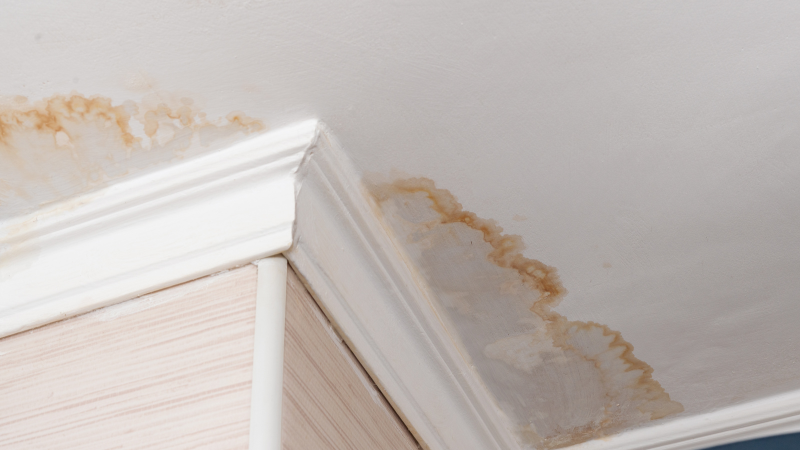Common Sources Of Water Damage in a Bathroom
Common Sources Of Water Damage in a Bathroom
Blog Article
We have stumbled upon the article pertaining to Preventing Water Damage in the Bathroom directly below on the net and reckoned it made perfect sense to share it with you here.

The shower room is exceptionally vulnerable for damp buildup and prospective water damages due to the regular use water in it. This write-up provides basic inspection methods to assist detecting water damage dangers.
The constant use of water in the restroom makes it very at risk for moist build-up as well as possible water damage. By examining it frequently, you can decrease water relevant problems.
The following set of evaluations is simple to execute and also should be done once in every three months in order to maintain your shower room healthy and also to prevent potential water damages triggered by the tub, the shower, pipeline joints and also plumbing, sinks, closets, and also the commode
Do not forget performing these inspections and be detailed while performing them. Keep in mind that these easy assessments can conserve you a great deal of money by providing early indicators for water damages
Sinks and also Cabinets
Sinks and also closets are exposed to dampness and also moisture everyday and also are commonly ignored. Check on a regular basis under the sink as well as on the counter top above it. Repair any drip in the trap as it may suggest drain issues. Browse the sink, sluggish draining pipelines might suggest an obstructed drain. Replace sink seals if they are broken or loose.
Tub as well as Shower
The shower and also bath tub call for unique focus and also upkeep. Inspect the ceramic tiles as well as replace if split. Make certain that there is no missing out on cement in between the floor tiles. Evaluate and also change split caulking at joints where the walls meet the floor or the bathtub. Obstructed drains pipes and also pipelines issues will protect against the tub from drying and might indicate significant issues below the bathtub. Seek advice from a professional quickly to stop structural damages. Focus on discolorations or soft locations around the tub walls as they might suggest an internal leakage.
Plumbing
Signs for water damage are tough to discover since the majority of pipes are installed inside the wall surfaces.
Pay special focus to flooring and also wall surfaces moisture as well as stains as they might indicate an unseen plumbing issue. Check wetness levels in adjacent rooms also.
The Commode
The bathroom is a vulnerable water joint. Check the water lines as well as search for leakages around the commode seat, in the pipe, and under the water storage tank. If you detect any type of signs of wetness on the flooring around the bathroom, look for leaks in the toilet edge and storage tank seals.
Be aware that hanging bathroom dish deodorants boosts the chances for blockages.
10 TIPS TO PREVENT WATER DAMAGE IN THE BATHROOM
The average household uses approximately 80-100 gallons of water per person per day. For a family of 4, that's almost 2,500 gallons of water a week! The largest portion of this consumption comes from bathroom use. Flushing the toilet uses the most water, followed by taking a shower or bath. With that much water running through the home, water damage in the bathroom is bound to happen. Knowing how to spot signs of a water leak is essential to preventing long-term damage. This guide provides you with tips to reduce the impact of water damage on your bathroom.
CAUSES OF BATHROOM WATER DAMAGE
Pipe breaks are the most common cause of water damage we see in our daily jobs. The age of a pipe plays a large role in a pipe break as well as corrosion. Over time, the metal begins to break down, allowing water to escape. Frozen pipe breaks are also a concern in the winter months. Toilet overflows caused by paper products or children flushing inappropriate items. Degraded caulking around the toilet or bathtub can allow water seepage, sometimes behind the fixture, into the subfloor or walls. Condensation forms when the water in a pipe is cooler than the air temperature. Beads of water form on the exterior of the pipes, sometimes so much so that the water begins to drip and pool below. Sink or shower backups created by poor drainage. HOW TO PREVENT WATER DAMAGE IN YOUR BATHROOM
Inspect your toilet supply line for worn or frayed hoses and replace them as needed. Winterize your plumbing to prevent a frozen pipe break. Use vent fans to prevent condensation that can lead to mold growth. Routinely check and replace degraded caulking around your toilet or bathtub. Increase the temperature in your toilet tank and insulate your pipes during the warm summer months to keep condensation from forming. Use child safety locks on the toilets. Flush only toilet paper. "Flushable" wet wipes are actually not good for your plumbing system. Additionally, feminine hygiene products should not be flushed. Prevent water from escaping the tub or shower. Make sure shower curtains are in good condition. Inspect shower doors and replace the seal strip if necessary. Wipe up any water that accumulates on the floor and use bath mats. Water left to sit can cause damage to the tiles and flooring. Refrain from using bath products containing heavy oils to avoid a clogged drain.

I was shown that report on Looking for Signs of Water Damage in the Bathroom from someone on a different site. Feel free to set aside a second to share this write-up if you enjoyed it. Thanks for taking the time to read it.
Book Your Service Report this page